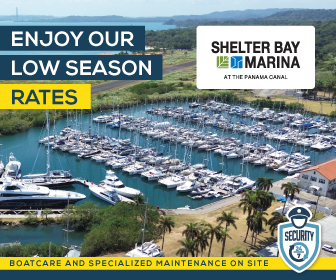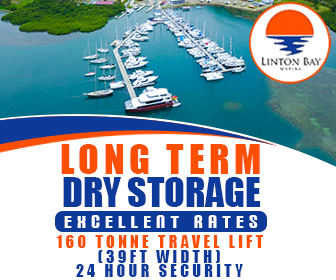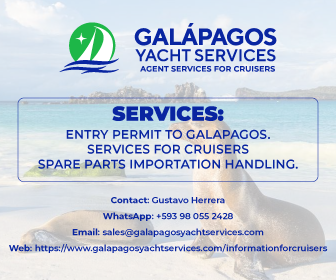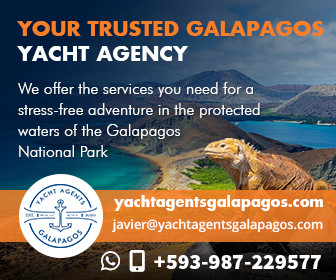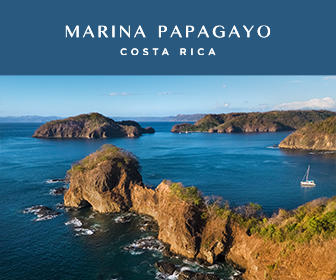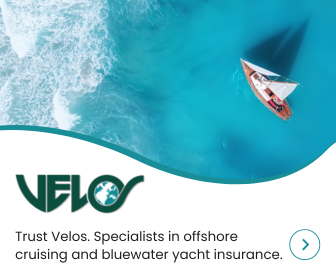San Blas, Porvenir: Aground and holed on a reef
(December 4, 2015) – For the first time in 9 years of cruising, these experienced cruisers entered an unfamiliar harbour without proven waypoints or sufficient sunlight to see their way in and sadly lost their boat.
Published 10 years ago, updated 6 years ago
From the “Last Voyage of Firefly” by Carrie Butler – https://sanctuarycruising.wordpress.com/
After more than two and a half years of refits and upgrades, Firefly was taking us to paradise.
We raced south from Isla Mujeres on the Yucatan peninsula past all of the western Caribbean countries with the plan to enjoy the San Blas first with friends already there, and then work our way slowly up the coast later this year, or next, we weren’t sure.
We ventured offshore for the journey, with a short stop in Guanaja, one of the Bay Islands of Honduras. The last leg, from Guanaja to El Porvenir in the San Blas islands, was just over 600 miles and once we turned the corner past the Vivorillo keys along the coast of Honduras and headed southeast, the winds were on or just aft of the beam, like Firefly liked them, and we glided along under full sail averaging 6-7 knots for 3 ½ of the 5 days.
The San Blas islands are a group of several hundred islands surrounded by reefs in the eastern portion of Panama that are populated and governed by the Kuna Indian tribe. The Kuna have vowed to maintain their traditional tribal ways and do not allow intermarriage with outsiders. The islands are still relatively unspoiled and only reachable by plane or boat. There aren’t many places like this left on earth.
As we normally did prior to entering any anchorage, we previously plotted waypoints from available references and studied aerial photos of the anchorage, establishing a track on our chart plotter to anchor off El Porvenir. The track showed our course to anchor passing through good water and we felt optimistic about the outcome.
We learned from our cruising friends in Mexico that the Panama Cruising Guide by Eric Bauhaus is the preferred guide, however, we could only find a First Edition copy, which did not have the extensive waypoints provided in later editions. We looked over a friend’s copy but were unable to copy the points as there were too many to write down and our copier couldn’t capture the chartlets well enough to make them useful. This would prove to be a mistake in the end.
On the morning of Sunday, January 18th 2015, about 100 miles from our destination, we tuned our SSB radio to the frequency for the Panama Cruiser’s net, hoping to connect with our friends and gain any local knowledge they could offer, but we didn’t hear any transmission when the appointed time came. We continued on, thinking that maybe they didn’t transmit on Sunday. When we reached about 25 miles from our destination we began calling our friends on VHF channel 16, but couldn’t reach them. Oddly there were no transmissions at all on channel 16, a recognized hailing and distress frequency, but we sailed on to the harbour entry waypoint, the only waypoint we had from the cruising guide we did possess.
As the day unfolded we continued to believe that we could enter the San Blas area and anchor south of El Porvenir well before dark. However, after several days of steady winds and good boat speed, the winds went light through the afternoon, and as expected the seas did not abate, making the sailing not as comfortable as before. As the afternoon continued we were forced to sail off our track to maintain speed from the wind and manoeuvre the seas, making the distance travelled longer than our track laid out.
While the conditions brought us into the initial waypoint at about 4:30 PM, which was later than we had anticipated, we still felt there was sufficient light to see our way into the anchor. What we didn’t realize at the time was that the “base chart” on our Garmin chart plotter was off to the southeast by as much as 600-700 feet. If that’s confusing to some, what that means is that in this case the track that we would follow, the one we believed would bring us to the anchorage through sufficiently deep water, would, in reality, drive us directly on to a reef.
We sailed into the islands on an easterly course, passed through our initial waypoint, and started the engine. Leaving it in idle, we turned more to the southeast, heading more downwind. We furled in the headsail, wrapping it around the forestay for storage, and continued to sail with our main and mizzen sails. Our next turn was southwest which put the winds roughly on or aft of our starboard beam, the opposite tack we had been travelling on for the previous 3+ days. It was now about 5 PM and without sunlight overhead, we couldn’t see that we were sailing straight towards the reef at Sail Rock.
I approached the mast and uncleated the main halyard in preparation for dropping the mainsail, but before Carrie could turn up into the wind she suddenly noticed rocks close off the port side and at almost the same time Firefly began to scrape across the bottom. With the main and mizzen sails both still up and steady winds filling the sails off the starboard beam we found ourselves unable to power the boat in reverse off the reef, the winds now steadily blowing us further into shallow water.
While I frantically worked to douse the sails Carrie powered the engine in full reverse and continuously cycled the rudder, but we soon began to heel more prominently as the depth of water underneath Firefly decreased. Although we were now inside the surrounding reefs there were still significant waves created by the winds, and even when the sails were finally doused the wind-driven waves pounded against the hull in the shallow water, heeling the boat further over on its starboard side and pushing Firefly further on to the reef.
As darkness fell the wind and waves began to lift Firefly up and violently bounce her hull off of the bottom and the angle of heel continued to increase as the water depth decreased. At this point, we began to call for help. Although we could see a number of other boats anchored in the harbour our calls on Channel 16 went unanswered. There didn’t seem to be any services like Coast Guard or commercial towing that monitor channel 16 like we are so fortunate to have in the States, so Carrie grabbed the air horn we keep on hand in the cockpit and sounded 5 short blasts, a recognized danger signal, while I retrieved our flare gun from below and fired two orange flares to attract some attention.
After about 20 minutes a dinghy did approach us from the direction of the anchored boats, but the operator spoke only French and was unable to provide any assistance at this point. Somehow one or two boaters anchored near other islands did hear our call and provided some much-appreciated assistance in the form of liaison with the Panamanian Coast Guard via cell phone. We later determined that they were not monitoring channel 16 because the radio in their office wasn’t working.
At this point we noted the longitude and latitude of Firefly on our chart plotter, feeling that we might need it for future reference. As we thought, the chart plotter still showed us to be in clear water, however, that was a little consolation at this point. We marked the position and relayed it to the individual on the radio who confirmed our finding, and I believe that position will be burned in my memory for some time to come. By the way, I later plotted that position on Kookaburra’s chart plotter (also a Garmin) and found the same offset.
A utility boat (or boats) from the island arrived in the vicinity on several occasions during the next hour or so as they tried to approach us to render assistance, but were unable to reach us due to the shallow depth and high waves and soon moved away.
As we continued to pound violently on the reef we feared that the boat would start taking on water, and it did. Carrie first noticed it in the engine room but soon thereafter it appeared in the main cabin. The level of water rose rapidly and soon covered the VHF radio on our chart table, necessitating that we use our handheld radio. Carrie began to hear popping noises down below that she believed were electrical in nature, so I began turning off electrical circuits at the panel. I also retrieved Spike, who was very glad to see me, from the after cabin along with a few articles of clothing and our wallets.
While I had up to this point intended to stay aboard the boat to protect the contents and salvage whatever was possible, it was now apparent that it was unsafe for us to stay aboard. With Carrie and Spike in the cockpit, I trudged around in the water and floating debris of the main salon retrieving our passports and other important papers along with Spike’s carrier, our laptop, and a waterproof bag. Sitting next to Carrie in the cockpit we made the decision to leave Firefly and I called for an evacuation. Our trusty friend on channel 16 relayed our call to the local authorities and said that they would be out to evacuate us in about 15 minutes.
The Coast Guard was finally able to approach us only by holding their larger boat well off of the reef and sending in a smaller boat on a line to extract us from Firefly. Carrie, Spike and I were successfully extracted and brought ashore on El Porvenir about 5 hours after we first ran aground. The Coast Guard guys didn’t speak much English but were very brave to accomplish the extraction in the existing conditions. I credit them with plenty of courage and compassion for our well-being.
After arriving on shore we provided them with our passport information for their report and they helped us secure a room at the local hotel where we stayed the night. It was little more than two beds and a toilet but was dry and the sheets seemed clean. Although we turned the lights out I lay in bed for a long time churning the evening’s events over in my head.
As I looked out on the harbour the next morning I could clearly see Firefly grounded about a quarter mile off the southeast shore of El Porvenir. It appeared that the boat had continued to move further onto the reef since we left. The bow had turned approximately 180 degrees from what I remember just before we were extracted, and she continued to turn through the morning another 90 degrees.
When our friends from S/V Kookaburra and S/V Joana arrived later that morning, our friend Jamie dinghied me out to Firefly to retrieve our underway log and check the conditions. The boat was extremely difficult to board and the insides were about ¾ full of seawater, covering all of the electronics, most of the engine compartment, and the better portion of the main cabin. The main mast had separated from its collar through the deck and was leaning noticeably to the starboard side. The main boom had been ripped off of the mast during the night and both booms lay at about 90 degrees to the hull. There were others onboard already removing anything that wasn’t nailed down. The Coast Guard had told us that they wouldn’t be able to provide any security once we left the boat and the word was already out.
Jamie brought us back to Kookaburra and moved us to an anchorage near the island of Yansaladup about five miles from where we went aground. We are so thankful that they brought us aboard and let us stay here while we recuperated. There’s no telling what our state of mind would have been sitting in that tiny room and seeing Firefly on the reef every time we walked outside.
The next few days were spent answering questions from the insurance company and trying to get a handle on how it all went so wrong. Jaime’s husband Keith was on delivery to Hawaii and she had a flight out to meet him on Thursday, which left Kookaburra all to us for an entire week. Before Jamie left, the girls on Joana came over with some much-needed clothing and of my father’s wheel that many saw on our Facebook page. They actually hunted throughout several villages to find it because they knew how sentimental it was to me. Friends like that are hard to find.
Firefly is a total loss. She lies hard aground and holed on a reef in an area with no facilities to remove her and has been stripped clean of everything. The insurance claim was submitted within a week of the grounding and we have waited almost 7 weeks since returning to the US for payment. Now we will begin putting things back together again and moving forward. We may be ashore now but we’re not done exploring the world yet.
Since the grounding, we have been completely overwhelmed by the outpouring of support from cruising friends, from our family members, and even from people that we hardly know, and for that we are supremely grateful. We have met some amazing people while cruising over the last 9 years.
The lessons learned here are simple and nothing new.
For the first time in 9 years of cruising Carrie and I entered an unfamiliar harbour without proven waypoints or sufficient sunlight to see our way in. Although we have never seen an offset in the chart plotter like the one that exists on our Garmin in this area, there was no excusing our total reliance on a single tool. Perhaps we were too tired after a 5-day passage to see it, but we should have stayed offshore another night and come inside the reef with the sun high over our heads to safely see our way to anchor.
Thankfully neither of us was hurt physically but the memories of that night will be with us forever, as will the responsibility.
You can continue reading Carl and Carrie’s story at https://sanctuarycruising.wordpress.com/2015/04/19/clearing-customs/
Related to following destinations: Panama, Porvenir, San Blas Islands
Related to the following Cruising Resources: Safety and Medical



